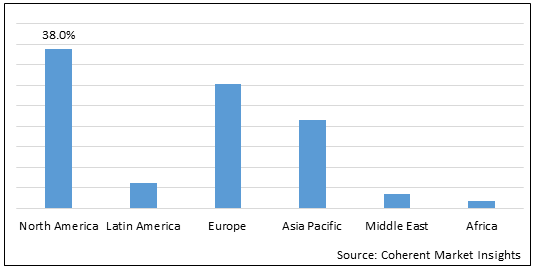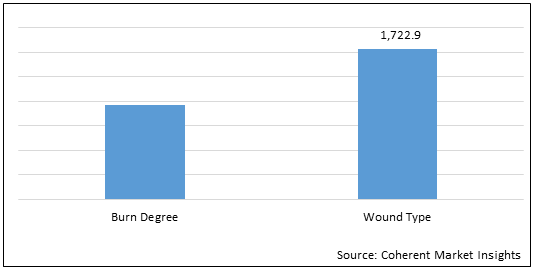Burns have various causes such as scalding from hot, boiling liquids, chemical burns, electrical burns, fires (including flames from matches, candles, and lighters), excessive sun exposure, and others. On the basis of the level of penetration of burn into the skin’s surface, burns can be classified into four major categories: first degree burns, second degree burns, third degree burns, and fourth degree burns.
First degree burn affects the first layer of skin and causes very mild form of injury. First degree burns are generally caused due to sunburn, electricity shocks, and scalds. First degree burns can be treated with skin care products such as antibiotic ointment, pain medication such as acetaminophen (Tylenol), and application of lidocain (an anesthetic agent) to the burn wounds. Second degree burn is also considered as minor type of burn, as it affects the second layer of skin by causing blisters on skin, which become red and sore. Third degree burns damage both the outer and the inner layer of the skin. The skin appears white, pearly, or leathery after being affected with third degree burns. Third degree burn requires emergency medical treatment, as it cannot be treated with home care settings. In this case, the skin can be replaced either through transplantation or grafting procedures. Fourth degree burns are the most severe and life-threatening type of burns, as they damage muscles, tendons, and bones.
Wound is a type of injury which occurs when the skin is either cut, torn or punctured (open wound) or subjected to a blunt force trauma causing a contusion (closed wound). Wounds can be classified into surgical wounds, ulcers, traumatic wounds, and others (microbial infection, among others).
Global burn care and wound care market is estimated to be valued at US$ 2,801.4 million in 2022 and is expected to exhibit a CAGR of 6.0% over the forecast period (2022-2030).
Figure 1. Global Burn Care and Wound Care Market Share (%), By Region, 2022

To learn more about this report, Request sample copy
Rising cases of burn and wounds is expected to drive growth of the global burn care and wound care market over the forecast period.
For instance, according to an article published by The House of Commons Library, a research and information service provider for the U.K. Parliament, in May 2019, it is estimated that the number of hospital admissions due to traumatic brain injury or acquired brain injury in the U.K. increased from around 235,000 admissions in 2001 to 304,800 admissions in 2018. Traumatic brain injury patients need intensive wound care and management during/post-surgery.
Burn Care and Wound Care Market Report Coverage
| Report Coverage | Details | ||
|---|---|---|---|
| Base Year: | 2021 | Market Size in 2022: | US$ 2,801.4 Mn |
| Historical Data for: | 2017 to 2020 | Forecast Period: | 2022 to 2030 |
| Forecast Period 2022 to 2030 CAGR: | 6.0% | 2030 Value Projection: | US$ 4,465.1 Mn |
| Geographies covered: |
|
||
| Segments covered: |
|
||
| Companies covered: |
Smith & Nephew Plc, Johnson & Johnson, ConvaTec Inc., Medtronic Plc, Medline Industries, Inc., 3M, Baxter International Inc., Cardinal Health, Mölnlycke Health Care AB, Integra LifeSciences, B. Braun Melsungen AG, DeRoyal Industries, Inc., Coloplast A/S, Advancis Medical, Essity Aktiebolag (publ), Schweitzer-Mauduit International, Inc., Medtrade Products Limited, Advanced Medical Solutions Group plc., Beiersdorf, and L&R Medical UK Ltd |
||
| Growth Drivers: |
|
||
| Restraints & Challenges: |
|
||
Uncover macros and micros vetted on 75+ parameters: Get instant access to report
Figure 2. Global Burn Care and Wound Care Market Value (US$ Mn), By Application, 2022

To learn more about this report, Request sample copy
Increasing research and development activities for introduction of novel burn care and wound care products is expected to drive market growth over the forecast period.
For instance, in February 2021, a new research project led by Lancaster University (UK) was launched to explore the potential of plasma-activated antimicrobial hydrogel therapy (PAHT) for the treatment of diabetic foot ulcer (DFU).
Key players operating in the market are focusing on launching new burn care and wound care products, which is expected to drive growth of the global burn care and wound care market over the forecast period.
For instance, in September 2020, MiMedx Group, Inc., a U.S.-based advanced wound care and therapeutic biologics company, announced the launch of its new advanced wound care product called EpiCord Expandable, a placental tissue allograft for the treatment of diabetic foot ulcers. The new EpiCord Expandable is designed in a way that the allograft covers up to twice the surface area once expanded in order to support the advanced wound care needs of patients suffering from chronic as well as hard-to-heal wounds.
Global Burn Care and Wound Care Market – Impact of Coronavirus (Covid-19) Pandemic
SARS-CoV-2 (Severe acute respiratory syndrome coronavirus) was first reported from Wuhan, China in December 2019, and was declared as a global pandemic by the World Health Organization (WHO), which designates this SARS-CoV-2 infection as novel Coronavirus (COVID-19). According to the Coronavirus (COVID-19), Weekly Epidemiological Update by the World Health Organization, COVID-19 has spread across the globe infecting over 523 million population leading to more than 6.3 million deaths as of May 22, 2022. The negative impact of COVID-19 on the healthcare domain is huge and it has significantly disrupted the healthcare industries’ entire supply chain, from raw materials to manufacturing and delivery. Similarly, the COVID-19 pandemic had a negative impact on the overall growth of the burn care and wound care market, owing to movement restrictions and lockdowns in several countries all over the world.
According to a review article published by the National Center of Biotechnology Information (NCBI), in February 2021, stated that around 14% of diagnostic tests or hospitalizations in Europe were cancelled or postponed. In addition, 36% of patients were unable to seek counsel from their primary care physician during the COVID-19 pandemic in 2020-2021.
Global Burn Care and Wound Care Market - Restraint
Product recalls are the factors that are expected to hinder growth of the global burn care and wound care market over the forecast period.
For instance, in June 2021, Smith & Nephew, a global medical equipment manufacturing company, recalled its Jelonet 5 X 5 contact layer paraffin dressing carton post discovery of a potential breach in the sterile barrier and paraffin leakage.
Moreover, in March 2018, Integra LifeSciences, a U.S.-based medical device company recalled its Manuka Honey Wound Gel, which is used for wound healing of minor scalds and burns, minor cuts, lacerations, and minor abrasions. The reason for recall was incorrect gel part number listed in a master manufacturing record. The product was finally terminated in July 2018.
Key Players
Major players operating in the global burn care and wound care market include Smith & Nephew Plc, Johnson & Johnson, ConvaTec Inc., Medtronic Plc, Medline Industries, Inc., 3M, Baxter International Inc., Cardinal Health, Mölnlycke Health Care AB, Integra LifeSciences, B. Braun Melsungen AG, DeRoyal Industries, Inc., Coloplast A/S, Advancis Medical, Essity Aktiebolag (publ), Schweitzer-Mauduit International, Inc., Medtrade Products Limited, Advanced Medical Solutions Group plc., Beiersdorf, and L&R Medical UK Ltd
Share
Share
Missing comfort of reading report in your local language? Find your preferred language :
Transform your Strategy with Exclusive Trending Reports :
Frequently Asked Questions
Select a License Type
Credibility and Certifications

860519526

9001:2015
27001:2022


Joining thousands of companies around the world committed to making the Excellent Business Solutions.
View All Our Clients
US Reciprocal Tax Impact Analysis On Burn Care And Wound Care Market
Stay updated on tariff changes with expert insights and timely information